Let’s start by looking at Vertigo as a typical DC business model.
DC is the place of multiple, similar Earths. It is the place of Vertigo and Tangent comics. And at the very beginning, when comics were unformed and no one was certain how to tell their stories, there were three companies. National Allied Periodicals, DC Comics, and All-American Publications. National was quickly bought out and left little besides it’s name which would haunt DC for years.
All-American was an ally, not a subsidiary of DC. They cross-promoted titles and characters, but eventually so did DC and Marvel, to the benefit of the bottom line of both companies. It was All-American that came up with the Flash, Green Lantern, Wonder Woman, Hawkman, the Atom, Mr Terrific, and Wildcat.
It was they, not DC, who came up with the Justice Society of America. And eventually it was they who broke away from partnership with DC. But in 1946 All-Amercan’s owner, Maxwell Gaines, sold his stake to DC and founded EC comics only to be crushed by the Wertham persecution. He would go on to found MAD magazine.
DC would go on to absorb companies like Quality, Fawcett, Charlton and even more recently with Wildstorm and Homage. But DC would never again have the same success it had absorbing All-American. There are reasons for this, but the point is DC has both ‘buying out the competition’ and ‘setting up a parallel company’ in its own DNA. It did it with All-American, it did it with Vertigo, it did it with Tangent and Helix and Paradox.
Vertigo began in 1993 as an imprint which would not be limited by the Comics Code Authority. In other words, instead of G and PG ratings, they could do stories and art that were anything up to R-rated. Drugs, politics, violence, horror, and the ever-popular attractive nudity were now on the table. It was a DC way out of a problem they had helped create. And it worked.
They started with Karen Berger as executive editor. As an editor she had already turned from superheroes to horror which she preferred. She nurtured Moore’s Swamp Thing and Gaiman’s version of Sandman. These were transferred to Vertigo when the new imprint was created.
It was a remarkable vote of confidence in a woman by an old, established, industry-dominant corporation. Strangely enough, this bold, innovative act of faith has never been trumpeted by DC or any of the people who want women to be put in these kinds of positions. But now that we’ve finally noticed it’s been done, let’s see how well it went.
In a word, brilliantly. That’s the short version.
In 1982, DC had revived its Swamp Thing character in a movie. In a kind of reverse engineering they exploited the movie with a revived comic, The Saga of the Swamp Thing. The initial stories were written by Matin Pasko, who basically followed the template laid down for him by previous comics. When he left to write more television, Len Wein put in Alan Moore. When Karen Berger became the editor, she actually gave Alan Moore permission to recast the series.
It’s possible she just had faith in his talent. But that boils down to she had faith in Alan Moore because he would one day become Alan Moore. She had to convince other people to go with her plan, which means there had to be a case that could be made. And, suprisingly, it’s fairly obvious to see.
The original story was a period piece, Swamp Thing was then brought forward in time, some changes were made, and eventually the story shambled as much as the character. More than that, in the early eighties there was a shift in attitudes developing. Ecology was coming.
So the Swamp Thing ceased to be a person turned into a monster and became a monster polluted by human consciousness. Man was evil, and nature was always better without him. Instead of human consciousness elevating nature, that consciousness now separated it from nature and lessened the creature.
This monster defended ‘the green’ which was all plant life bound together in a kind of mystical force. To hell with the animals because, simply put, plants were thought to be peaceful. That may not be true but it was how people saw things.
The main villain, in a concept that was not yet cliché, was Sunderland Corporation. The image of a factory spouting smoke was once a symbol of the triumph of man, but was becoming a symbol of harming nature. That became part of the background of this whole story.
As a direct villain, Moore imported the Floronic Man. The Swamp Thing’s former origin – a human made part plant by chemicals – now became Floronic Man’s origin. And coming from a human origin he is, of course, evil.
The Floronic Man initiates one of the simplest destruction plans ever. He will get the plants to produce more carbon dioxide and suffocate the human species, which is an evil species anyways. Fortunately Swamp Thing comes back to his non-human self and stops him.
Moore also said the Swam Thing was the defender of the Parliament of Trees. That is the correct collective noun, by the way. And there wasn’t just one Swamp Thing, there was a series with dozens, maybe hundreds of members.
It’s kind of like what they did with Solomon Grundy in James Robinson and Tony Harris’s Starman.
The final step was to take The Saga of the Swamp Thing away from the Comics Code Authority and sell comics to people with adult sensibilities. Swamp Thing was the first comic to ditch the censor stamp.
And it went on to take a literary view of horror. Edgar Allen Poe would have proud to write some of this stuff. So would EC, which tried to do the same thing in the fifties.
At the time green sensibilities were skewed to the young. So it was the twenty-somethings who were the market they were aiming at. So much for DC only writes comics for forty five year old men.
When the Vertigo imprint was created, Swamp Thing was transferred to it. But you can’t make an imprint out of a single title. Just look at all the indies that have tried and failed with that tactic.
And the second title became bigger than the first. It did not incorporate an existing demographic, it either created one or just went beyond all that by quality. I’m talking of course of Neil Gaiman’s Sandman. Starting out with the idea of reviving Simon and Kirby’s Sandman, he was told by Karen Berger to keep the name but make everything else up from scratch.
Throwing things onto the creator was something Berger did a lot. But she seems to have known who to ask to do that. That’s a talent.
If Poe would have liked Swamp Thing, W B Yeats would have loved Sandman. The tales of seven immortals, the Endless as they are called, show how a writer can create a new mythology.
Each of the seven is designed entirely around the first letter D. Sandman is also called Dream. There’s also Death, Delirium, Desire, Despair, Destiny, and Destruction. Each of these characters is the personification of some aspect of existence. It is important to remember they are not people with a history, they are abstract principles given (or forced into) human form.
So Delirium was once known as Delight. She appears as a fourteen year old girl and she is constantly changing. Her hair changes color, style, and length; her clothes constantly transform. It sounds like a fourteen year old.
But she is scatterbrained, rarely making substantive comments to the conversation. She was a delight as a preadolescent child, now she is changing. Her Delirium may be adolescence, but it may also be drugs just at that stage when the addict thinks it’s a solution and the people around them notice changes in their personality. And yet, every once in a while, the other Endless realize she has an insight beyond anything any of them understood.
Destruction has ceased to be destructive. He decided at the time of the Enlightenment that human beings would work out how to make the atomic bomb. He did not want to be responsible for that. His retirement didn’t stop destructive events or people, he’s just not in on it any more.
Like Delirium, formerly Delight, Destruction shows us that change comes to the Endless. Perhaps more slowly than for humans, but it comes, nonetheless. In this I note much of the arc of the stories is Dream learning that change is inevitable. Perhaps he could have just looked at these other two and realized that was so.
One of the little twists that make this story so carefully realized are the shadows of the Endless. By various turns and for various characters they do not fit the caster’s physical form, the shadow has a scent, they cast two shadows of different natures, and so on. We cast shadows and magical spells and maybe there’s less of a distinction than we’d like to think.
Creepy.
There are seven members of the Endless. Three are male, three are female, and one (Desire) is androgynous. If we line the males and females up in alphabetical order, they have a certain parallelism. There are Destiny and Death; Destruction and Despair; Dream and Delirium. In another context, then, we have the image of the Endless in a slow decay.
The book was very successful. It sold, and a lot were sold to females going to college. Older than the standard, different gender to the standard. Sandman became one of those early graphic novels that made it to the New York Times bestseller list.
It was a story of change. We are none of us what we were, and even our memories are unreliable. They decay and have to be repaired and change so they don’t recall the real facts. Indeed, they are subject to change due to the forces personified by the Endless. It was this touching of the eternal which itself was only temporary that not only drew new comic book readers to the title, it brought a new kind of reader to comics themselves.
While Vertigo was presenting Sandman it also gave Sandman’s Mystery Theater which didn’t center on a tall, emaciated immortal, but a short, rotund mortal named Wesley Dodds. Starting as a Vertigo title and from the team of Matt Wagner and Guy Davis, this 1993 to 1999 series did pretty well everything that’s credited to the superhero movies. Seriously.
The guy with the green suit, purple cape, and yellow and blue gas mask became the guy in the guy in the gray suit, the brown/black gas mask (the right color), and a much quieter hat. Instead of a cape, he wears a trench coat. I like the new costume because he could ditch a couple items and blend in to a crowd. Particularly with how Wesley Dodds is drawn.
Instead of the usual 6’4”, handsome square-jawed white man with broad shoulders, abs, and remarkable strength, dexterity, and speed, we get something else. A short, rotund, weak-chinned man wearing glasses that look a lot like the lenses of his gas mask. It’s kind of like Peter Parker was never bitten by a radioactive spider but went on to fight crime anyways. (Oh, gods, they’re going to do that story now, aren’t they?)
So, like modern movies, efforts were made to make the hero more human, more relatable for anyone who wasn’t a preadolescent in hero-worship mode. The color palette looked less like a newspaper Sunday funny and something that should be taken seriously.
It is less comic book and more film noir. And that is a great visual tone for the stories. It fits with the almost Batman-like crazies that Sandman has to hunt down and capture without getting himself killed.
But where Batman is the sort to keep everything bottled up, Sandman has a female partner named Dian Belmont. She assists him and protects him and is his partner at home, at war, and in bed. The depth of their relationship condemns every instance of woman-in-the-refrigerator.
This guy even cries. It’s a very powerful moment to see a superhero cry. He is coping with a very serious issue. There’s no single tear down the cheek, no screaming ‘noooo,’ just a guy trying to cope with things that other people ignore.
The Sandman does not keep to psychological horror. Superpowered villains are quite acceptable in his stories. And more important, he meets the other Sandman, Dream. The Endless member who controls people dropped by in the dreams of Wesley Dodd, drawing him every deeper into a warped world.
In other words this story in not only noir, it is also psychological and supernatural horror. The exact border between psychological and supernatural isn’t entirely clear. But it is also willing to make the supernatural a source of strength as well.
The Vertigo universe was not closed off from the DCU, but it’s a separate stream. It’s like New York and Oklahoma: they’re both part of the same country but they don’t have that much in common. They have different viewpoints, different experiences, and different goals. But not always.
Vertigo picked up V for Vendetta. Where Miller’s Batman is castigated for being right wing, V is left wing and that’s apparently fine. This even though Batman doesn’t kill while V is deliberately murderous. Yet both stories are about someone who puts their right of moral judgment above that of the established authorities or public opinion.
V is basically about a door, labeled with a V, behind which is horror. If you don’t recognize the scene, watch Metropolis on Youtube. You will see the door there, but it goes onto a level where many people suffer. The V is in both the book and the movie the Roman numeral 5.
Metropolis also has little trucks where the driver stands and people sit on either side of the truck behind them. Just like in Star Wars: A New Hope. Also, the robot inspired C-3PO. I think that movie secretly rules the world. After all, there are other elements in common between V and Metropolis including the distinction between what is and what really is, a general left-wing stance, and an endangered, degraded woman among others.
But strangely enough, in the lists of influences on V, Metropolis doesn’t seem to get a mention.
Still, the story created a movie in 2006, and the story is collected in paperback and hardcover. Unlike most recent comics, V has had an effect on real-life politics, the Guy Fawkes mask became a symbol for protest groups. But V never entered the DCU, and Vertigo took another direction.
Vertigo was already aimed at older readers who is looking for more strenuous and hence more mature content. As such the main DCU characters were eventually turned back to their home imprint. Everything built up with Gaiman’s Sandman, Sandman Mystery Theater, Animal Man, Hellblazer, Swamp Thing, and others were returned to the DCU mainstream. DC had a new idea.
In 2010, Vertigo made the switch to creator-owned stories. In this it took up the mantle of Homage Comics (an imprint of Wildstorm, which DC acquired in 1998). Since then it has produced titles like American Vampire, Fables, and Astro City. It has continued to develop as a publisher.
In American Vampire, Scott Snyder and Rafael Albuquerque (and Stephen King for the first five issues) give us a vampire story. But for once, it’s more than vampires telling us how old they are in some present-day scene. It’s a story through history of vampires including new species which have different characteristics to the traditional Hollywood types. Oddly enough, the new type is called American vampires.
With Fables, we have a story of fairy tale creatures driven into the real world. Interestingly, the characters remain consistent, but the genre they are in can change. Bill Willingham and various artists take mostly European and American fairy tales from Snow White, Sleeping Beauty, all the way through to Paul Bunyan and the Lone Ranger. Like Once Upon a Time, Fables is a reworking of the familiar. It’s not the only Vertigo title to be doing that at the moment.
Astro City, created by Kurt Busiek and Brent Anderson, is at first sight a conventional superhero saga. However, it takes the material and considers deeper implications of who these people are and why they do this stuff. Remember, for a long time heroes were just plain heroic. People accepted they were heroic for no particular reason: for example, no one in Gotham knows Batman catches criminals because his parents were killed. They don’t know he’s Bruce Wayne. That’s just us, the readers. He just shows up and fights bad guys and that’s apparently good enough.
Many of the characters are analogs of DC characters. But the stories provide good test vehicles for new ideas, new plot twists, and new story arcs. What’s here is what’s probably going to be in the DCU before too long.
Vertigo has extended the genres and the maturity of the subjects comic books can explore, repairing much of the damage done to the medium over various eras. Just as important, it has done so while making a profit. If Vertigo were an independent company, it would be the fourth largest in comics (behind Image). It’s a vindication of originality and quality, which is a really unusual gimmick for selling comic books. Seems to work, though.

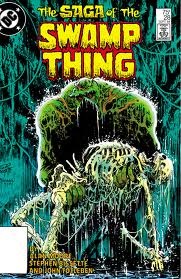
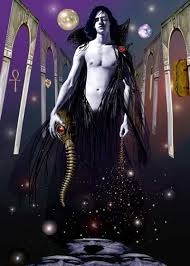
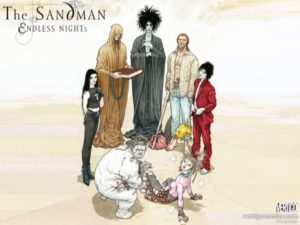
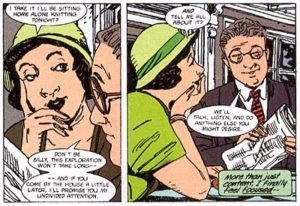
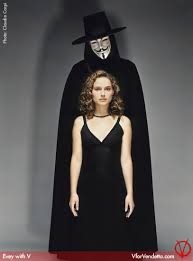
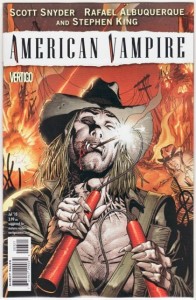
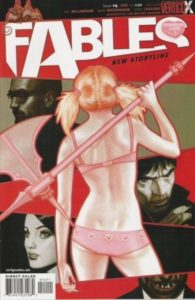
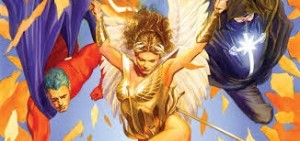
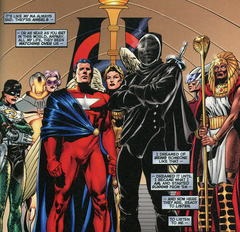
Comments are closed.